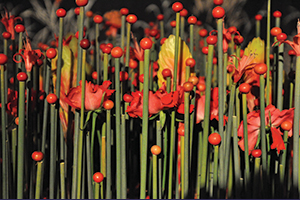 Denmark native Nicolai Bergmann is a household name when it comes to contemporary floral design in Japan. In fact, he’s quite a bit more than just that – he’s a brand name, and a pretty exclusive one at that. His illustrious, domestic and global projects and exhibitions aside, he’s collaborated with a host of clients comprised of some of the world’s most prominent hotels, jewelers, designers and design houses, as well as a number of notable celebrities. All this elevates the Copenhagen-born creator to celebrity status here in Japan.
Denmark native Nicolai Bergmann is a household name when it comes to contemporary floral design in Japan. In fact, he’s quite a bit more than just that – he’s a brand name, and a pretty exclusive one at that. His illustrious, domestic and global projects and exhibitions aside, he’s collaborated with a host of clients comprised of some of the world’s most prominent hotels, jewelers, designers and design houses, as well as a number of notable celebrities. All this elevates the Copenhagen-born creator to celebrity status here in Japan.
In just a decade, Bergmann has become the most influential foreign floral artist in Japan with his originally conceived Euro-Japanese principles, which unite color, balance, detail and form, with chic modernity – synonymous with Bergmann’s overall modus operandi – driving the 33 year-old designer and his innovative company forward and into new and challenging areas.
However, Bergmann, despite having around forty staff working for him (a leap from the seven he had just four years ago), is still very hands-on, liaising closely with his clients to deliver the very best and continuously challenging himself to surpass their expectations, as he explains from Tokyo’s opulent Shangri-La hotel, where his latest exhibit, ‘The World of Nicolai Bergmann’, is being held.
“Nowadays, everybody is trying to achieve a single style and it soon gets boring. I look to do a broad range of things,” says Bergmann. “I love to do very contemporary pieces, for example, perhaps one thousand stems of pure green with a single flower on top, or to produce designs for a gorgeous wedding that’s very opulent. The colors I select are fairly constant – kind of dusky, but best described by the Japanese word “shibui” (acerbic good taste, which is simple, subtle, and unobtrusive), but sometimes I love to work with fantastic pinks or white for a wedding. Every time I take on a job I have to give the client what they want, but I try really hard to give them something extra, something they weren’t expecting to surprise them. For me, this is the most important challenge when I’m producing,” he enthuses.
The Nicolai Bergmann enterprise has grown today to include, along with the wedding and event styling aspects of the business, the Nicolai Bergmann International School of Floristry in Aoyama, Tokyo and four dedicated Nicolai Bergmann stores. These include Sumu, an interior design store located in the Galleria shopping area at Tokyo Midtown, offering Danish-inspired interior and lifestyle products, and a store in Copenhagen.
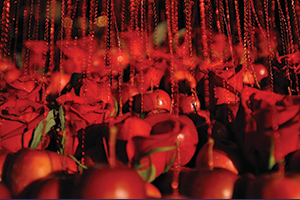 Naturally, the industry Bergmann works in garners a lot of female attention, with his exhibitions and schools frequented predominantly by women. Hundreds of fans flock to his schools and shows, the majority of whom are infatuated with Bergmann’s zestful, new and artful approach to floral arrangement and design. Some, however, are simply infatuated with the man himself – his welcoming smile, natural warmth, bespoke suits and, to put it mildly, better-than-average looks ensure he is never starved of female attention. The affable Bergmann takes all this in his stride, however, and is in fact more interested in what the guys are thinking.
Naturally, the industry Bergmann works in garners a lot of female attention, with his exhibitions and schools frequented predominantly by women. Hundreds of fans flock to his schools and shows, the majority of whom are infatuated with Bergmann’s zestful, new and artful approach to floral arrangement and design. Some, however, are simply infatuated with the man himself – his welcoming smile, natural warmth, bespoke suits and, to put it mildly, better-than-average looks ensure he is never starved of female attention. The affable Bergmann takes all this in his stride, however, and is in fact more interested in what the guys are thinking.
“There have been a few times when I’ve had female fans sign up for my classes and they’ve gone a bit over the top, but you just have to tell them to back off a little bit, remembering that they’re still clients after all, so you have to be diplomatic. There’ve only been a couple of times when things have gotten a bit silly and you have to be a bit stricter,” he says. “For the most part it’s nice to be in the spotlight and to receive compliments, but what I really enjoy is receiving a diverse range of feedback, from young girls to elderly ladies, and from guys too! The fun thing for me is encouraging my male clients to attend classes at my school. It’s important for them and for the learning process. By coming to my classes, they get a deeper insight into what I’m about and what I actually do,” he continues.
“A lot of the guys think that anything to do with flowers is girly and assume that as men they won’t be able to create anything. But I’ve been so surprised! They often have a great time and actually return for more lessons. When I have an exhibition and I get a compliment from a guy it really means a lot to me because I know they’re telling the truth. Even though men comprise just one percent of my clients, they have an important say, as they have no expectations to begin with and have no other agenda. If they say they’re impressed or have been touched or moved by my creations, that really inspires me. Of course it’s always nice to hear positive feedback from women too, but from the guys it’s refreshing, and I really pay attention to their comments.”
Bergmann makes it all look so easy. His exhibition at the Shangri-La is utterly charming. A smooth blend of modern, moderately edgy pieces that just skirt being ostentatious, juxtaposed seamlessly with softer creations, with smooth lines and a hint of tradition in his exquisite, trademark detailing. Bergmann utilizes dusky hues of olive, apricot, copper, mahogany, hazel, mulberry, amaranthine and brilliant white to create an atmosphere that is warm and inviting, but at the same time sophisticated, intricate, upscale and idiosyncratic – perhaps reflecting a few of the artist’s own traits. As effortless as Bergmann’s exhibitions and designs may seem to the uninitiated, the background preparation for his shows tells a different story.
“My routine work is often client-focused, but when I have the chance to do my own events like this one it’s all about how I feel at the moment. I always do a lot of preparing, and the fact that I have been able to do all the preparations on-site this time [rather than having to prepare somewhere else] has been a breath of fresh air for me, as taking things from place to place can be very restrictive and limiting,” he says.
“I make a lot of sketches and drawings, and come up with a lot of ideas that form a skeletal plan of what I intend to achieve. I hand-pick a lot of nice materials and artifacts from here, there and everywhere, then just let some of them speak for themselves. Due to fresh flowers having only a limited life span, I start by making the bases with dry leaves or sticks up to a month before the event, sometimes longer, and at the last moment the fresh flowers are added. Through this process I get to know all the forms and structures I’ve created intimately. The flowers come last, although with certain bases I have flowers in mind when I’m designing and creating them. Many of the containers I’ve used have been used for other shows and events, and over the years I’ve gathered more and more. I have about fifty or so now that I simply love. A lot of the bases are the result of collaborations with Japanese designers, which makes them very special,” says Bergmann.
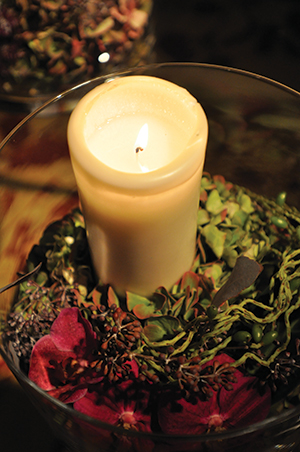 To describe Nicolai Bergmann as simply a flower arranger would be a solecism. Flowers are at the core of Bergmann’s business and are of course synonymous with his global brand, Nicolai Bergmann Flowers and Design. As an individual, he’s a real innovator – a pioneer who is not afraid to accept challenges that at first seem far from his comfort zone. There can’t be too many floral artists out there who can say they’ve designed watches, for instance.
To describe Nicolai Bergmann as simply a flower arranger would be a solecism. Flowers are at the core of Bergmann’s business and are of course synonymous with his global brand, Nicolai Bergmann Flowers and Design. As an individual, he’s a real innovator – a pioneer who is not afraid to accept challenges that at first seem far from his comfort zone. There can’t be too many floral artists out there who can say they’ve designed watches, for instance.
“I get a lot of offers to collaborate with others and this is really exciting for me. I’ve worked with prominent Japanese lacquer makers and I plan to start making my own bases out of glass. I’ve just found a place where I can do this. Glass-blowing has always been a bit of a fantasy of mine as it would enable me to create extremely unique pieces for me to use, sell or possibly auction,” muses Bergmann.
“I’m very progressive when it comes to art and design – it’s all about finding your true self. I’ve been working in Japan for 10 years now, and I’ve developed my network of clients. My designs have evolved too, but I really found my own style in the last five years. With this, I’ve designed shoes for a Danish designer and a series of glasses for an eyewear company, as well as a line of watches for Seiko. All this has happened because of my sense of color and form. Some may ask ‘why is a florist making shoes or glasses?’ Design is all connected – the fundamentals are about color and form. When I was first asked to collaborate on the eyewear project I was like, ‘I’m in the flower arrangement business. How can this possibly translate to watches?’ However, I challenged my own boundaries and found that, quite simply, designing is designing,” he claims.
Nicolai Bergmann has created his own success; it wasn’t handed to him on a silver platter. He finished high school but didn’t go on to higher education, and he’s a living testament to the fact that academia is only one route to achievement; there are many others. As a child he made Christmas wreaths with friends to sell to his neighbors. Perhaps it was then, in his local town in Copenhagen, when his entrepreneurial flame was first lit. Since coming to Japan a decade ago, his hunger for challenge and the step-by-step progress he’s made has ensured this flame is now burning brighter than ever.
“There’s no doubt in my mind that I’d be doing what I’m doing, but never in my wildest dreams could I have envisioned achieving everything I have. One thing this past decade has taught me is to never stop believing that you can do more and more and more; that challenges are ongoing. It’s been tough at times, but in some way or another there’s been constant progress every year and that keeps me motivated, together with new things happening and new challenges always on the horizon,” says Bergmann.
As we sit there in a cozy alcove on the twenty seventh floor of the Shagri-La, beyond the hustle and bustle of Bergmann’s nearby exhibition, enjoying a stunning vista of the city, it becomes patently clear that Nicolai Bergmann is a very genuine individual, living a very exceptional life. We shoot the breeze about cars. He tells me he just got rid of his favorite jeep-like Mercedes G500 because it’s impossible to park in Tokyo, and replaced it with an Audi G7, so he can take the mid-week off and escape the city with his wife and child. He claims he’d love to visit St. Petersburg, India and the Middle East, since he likes to feel the slight ‘fear factor’ of the unknown on his travels. This brings out the explorer in him that originally brought him to Japan.
I’ve half a mind to order a couple of single-malt Scotch whiskeys and ask to see the cigar collection as the conversation flows, but notice that my subject has a host of aficionados who have been patiently waiting to catch a glimpse of the star (and possibly get an autograph), and I realize I’ve been monopolizing his time.
We part like old friends and I’m left with the notion that Nicolai Bergmann wears his celebrity status very well. When chatting, he’s warm and inviting, devoid of the airs and graces some celebs put on. He is also a sophisticated conversationalist who offers intricate detail on topics he’s passionate about, and his demeanor is relaxed yet naturally elegant – essentially, he is the embodiment of his own designs. Or vice versa, perhaps?
Story by Jon Day
From J SELECT Magazine, January 2010

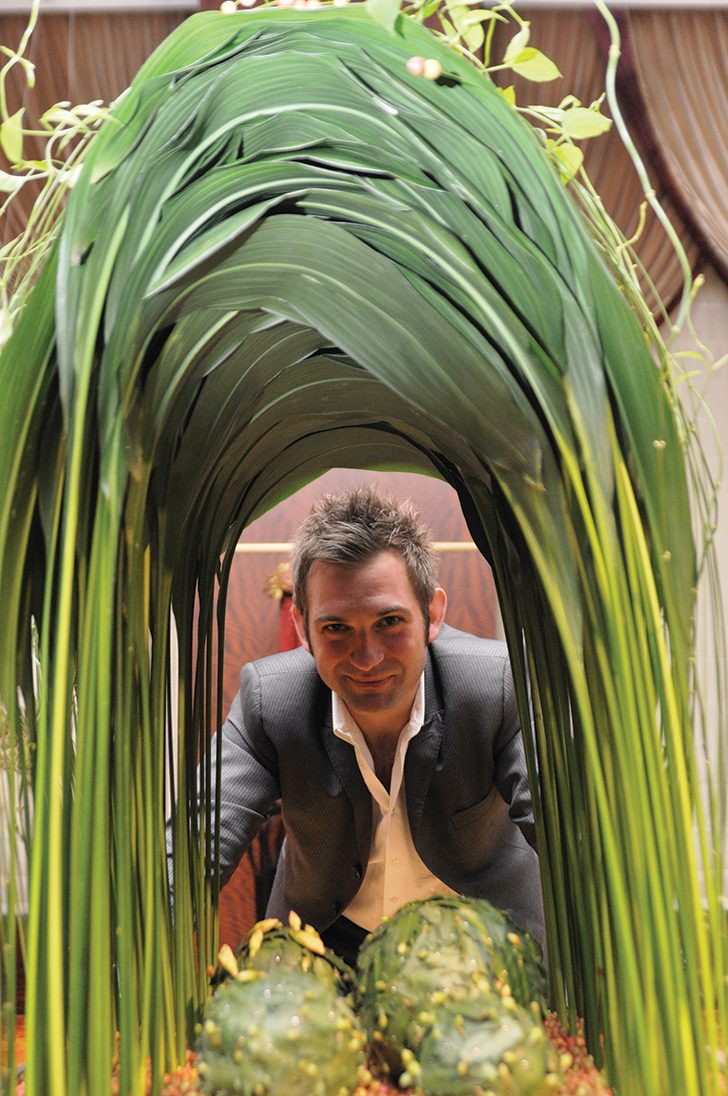



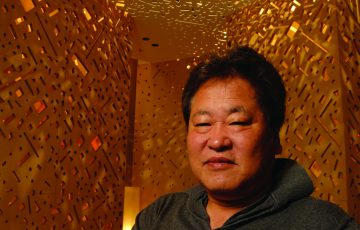

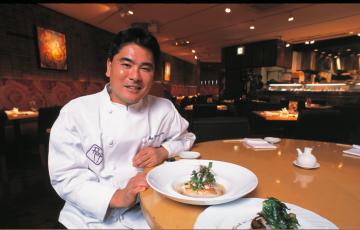
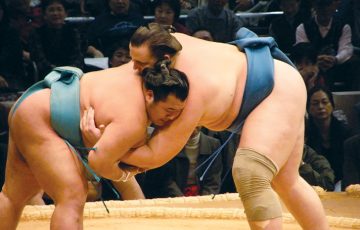






Recent Comments